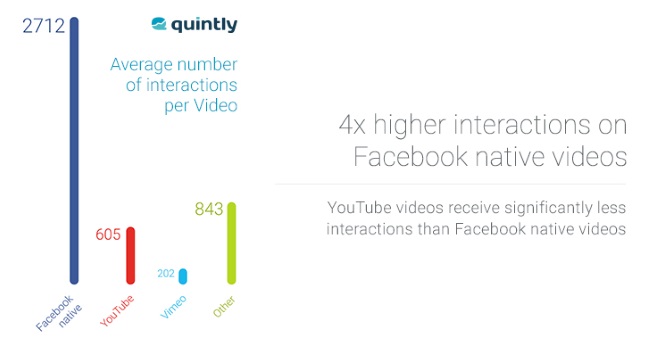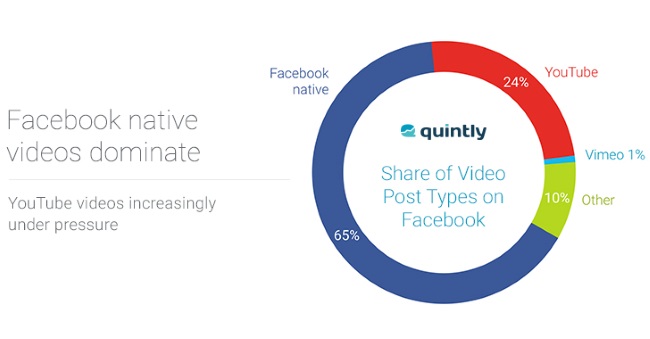Before Facebook launched its native video capabilities, the only way for individuals or brands to share video was through Vimeo, YouTube or some other video platform. This wasn’t always ideal, but it worked. Then, Facebook brought native video and changed the game. Since then, native video has far outperformed others in terms of engagement.
Also Read: Facebook Rolls Out 360 Video To Ads And iOS
It has become abundantly clear that the future of Facebook engagement is through video. Especially after the introduction of 360 video (a brilliantly engaging format) endless opportunities are now presenting themselves for brands to use it. Engagement on Facebook video is sure to grow even more in the next few years as soon as new technologies – especially VR – take off on a wider scale.
A new study from Quintly shows us just how powerful native video is on Facebook today.
The study, based on 1 million Facebook video posts showed that, compared to other upload sources, Facebook has close to 4 times the interaction rate, than YouTube, Vimeo and other embed sources. When looking at advertising, native Facebook videos and Vimeo videos also “tend to be promoted most frequently than others.”

If you like our stories, there is an easy way to stay updated:
Follow @wersm
The study also pointed out that it was mostly native videos being uploaded to Facebook (65% of all video shared on the platform) versus videos from YouTube (barely a 25% of all videos) and others like Twitch, Vevo, and Red Bull (nearly 10%). Vimeo accounts for even less than the others, at 1%.

This is quite obvious to anyone who has been following the native video debate, but Quintly explains that:
[quote]Facebook invests a lot of resources to increase the pressure on video “top dog” YouTube. Having its own algorithm, which ranks updates in users’ News Feeds, Facebook is able to determine which reaches more people. As YouTube videos can be seen as competition for Facebook, it would make sense to incentivize videos uploaded straight to Facebook.[/quote]
If interactions are a main KPI, one should upload video natively on Facebook. Features such as auto-play helps get people’s attention as they scroll through their News Feeds, especially on mobile – we all know the power of mobile in this respect by now. Grabbing attention within the first few seconds of a video provides many benefits for further success.
Find out more in the Slideshare below.
[slideshare id=56165652&doc=facebooknativevideostudy-151215140141]
